Ireland: County Cork Landscapes
Nov 30, 2020 14:31:39 #
County Cork (Irish: Contae Chorcaí) is a county in Ireland. It is the largest and southernmost county of Ireland, situated in the province of Munster and named after the city of Cork, Ireland's second-largest city. The Cork County Council is the local authority for the county. Its largest market towns are Mallow, Macroom, Midleton, and Skibbereen. In 2016, the county's population was 542,868, making it the third-most populous county in Ireland. Notable Corkonians include Michael Collins, Jack Lynch, and Sonia O'Sullivan.
Cork borders four other counties: Kerry to the west, Limerick to the north, Tipperary to the north-east and Waterford to the east. The county contains a section of the Golden Vale pastureland that stretches from Kanturk in the north to Allihies in the south. The south-west region, including West Cork, is one of Ireland's main tourist destinations, known for its rugged coast and megalithic monuments and as the starting point for the Wild Atlantic Way. The largest third-level institution is University College Cork, founded in 1845, with an undergraduate population of around 15,000. Local industry and employers include technology company Dell EMC, the European headquarters of Apple, and Dairygold, which owns milk-processing factories in Mitchelstown and Mallow.
The county is known as the "rebel county", a name given to it by King Henry VII of England for its support, in a futile attempt at a rebellion, of Perkin Warbeck, who claimed to be Richard of Shrewsbury, Duke of York. This name has 15th-century origins, but from the 20th century the name has been more commonly attributed to the prominent role Cork played in the Irish War of Independence (1919–1921) when it was the scene of considerable fighting. In addition, it was an anti-treaty stronghold during the Irish Civil War (1922–23). Much of what is now county Cork was once part of the Kingdom of Deas Mumhan (South Munster), anglicised as "Desmond", ruled by the MacCarthy Mór dynasty. After the Norman invasion in the 12th century, the McCarthy clan were pushed westward into what is now West Cork and County Kerry. Dunlough Castle, standing just north of Mizen Head, is one of the oldest castles in Ireland (A.D. 1207). The north and east of Cork were taken by the Hiberno-Norman FitzGerald dynasty, who became the Earls of Desmond. Cork City was given an English Royal Charter in 1318 and for many centuries was an outpost for Old English culture. The Fitzgerald Desmond dynasty was destroyed in the Desmond Rebellions of 1569–1573 and 1579–1583. Much of county Cork was devastated in the fighting, particularly in the Second Desmond Rebellion. In the aftermath, much of Cork was colonised by English settlers in the Plantation of Munster.
In 1491 Cork played a part in the English Wars of the Roses when Perkin Warbeck, a pretender to the English throne who spread the story that he was really Richard of Shrewsbury (one of the Princes in the Tower), landed in the city and tried to recruit support for a plot to overthrow King Henry VII of England. The Cork people supported Warbeck because he was Flemish and not English; Cork was the only county in Ireland to join the fight. The mayor of Cork and several important citizens went with Warbeck to England, but when the rebellion collapsed they were all captured and executed. Cork's nickname of the 'rebel county' (and Cork city's of the 'rebel city') originates in these events.
In 1601 the decisive Battle of Kinsale took place in County Cork, which was to lead to English domination of Ireland for centuries. Kinsale had been the scene of a landing of Spanish troops to help Irish rebels in the Nine Years' War (1594–1603). When this force was defeated, the rebel hopes for victory in the war were all but ended. County Cork was officially created by a division of the older County Desmond in 1606.
A German U-boat torpedoed the British-owned steamship Lusitania, killing 1195 people including 123 Americans, on May 7, 1915 off the Old Head of Kinsale.
In the 19th century, Cork was a centre for the Fenians and for the constitutional nationalism of the Irish Parliamentary Party, from 1910 that of the All-for-Ireland Party. The county was a hotbed of guerrilla activity during the Irish War of Independence (1919–1921). Three Cork Brigades of the Irish Republican Army operated in the county and another in the city. Prominent actions included the Kilmichael Ambush in November 1920 and the Crossbarry Ambush in March 1921. The activity of IRA flying columns, such as the one under Tom Barry in west Cork, was popularised in the Ken Loach film The Wind That Shakes The Barley. On 11 December 1920, Cork City centre was gutted by fires started by the Black and Tans in reprisal for IRA attacks. Over 300 buildings were destroyed; many other towns and villages around the county, including Fermoy, suffered a similar fate.
During the Irish Civil War (1922–23), most of the IRA units in Cork sided against the Anglo-Irish Treaty. From July to August 1922 they held the city and county as part of the so-called Munster Republic. However, Cork was taken by troops of the Irish Free State in August 1922 in the Irish Free State offensive, that included both overland and seaborne attacks. For the remainder of the war, the county saw sporadic guerrilla fighting until the Anti-Treaty side called a ceasefire and dumped their arms in May 1923. Michael Collins, a key figure in the War of Independence, was born near Clonakilty and assassinated during the civil war in Béal na Bláth, both in west Cork.
https://en.wikipedia.org/wiki/County_Cork
We left Aghadoe Heights on our way to Middleton in County Cork and a tour of the Jameson Distillery (subject of my next post). It rained most of the morning but trhe drive through County Cork was beautiful. All of these images were taken through the tour bus windows with a Nikon D7500 and an18-300 Nikkor lens at 1/640 sec f5.6, auto ISO. Please enjoy, especially the downloads.
Mark
Cork borders four other counties: Kerry to the west, Limerick to the north, Tipperary to the north-east and Waterford to the east. The county contains a section of the Golden Vale pastureland that stretches from Kanturk in the north to Allihies in the south. The south-west region, including West Cork, is one of Ireland's main tourist destinations, known for its rugged coast and megalithic monuments and as the starting point for the Wild Atlantic Way. The largest third-level institution is University College Cork, founded in 1845, with an undergraduate population of around 15,000. Local industry and employers include technology company Dell EMC, the European headquarters of Apple, and Dairygold, which owns milk-processing factories in Mitchelstown and Mallow.
The county is known as the "rebel county", a name given to it by King Henry VII of England for its support, in a futile attempt at a rebellion, of Perkin Warbeck, who claimed to be Richard of Shrewsbury, Duke of York. This name has 15th-century origins, but from the 20th century the name has been more commonly attributed to the prominent role Cork played in the Irish War of Independence (1919–1921) when it was the scene of considerable fighting. In addition, it was an anti-treaty stronghold during the Irish Civil War (1922–23). Much of what is now county Cork was once part of the Kingdom of Deas Mumhan (South Munster), anglicised as "Desmond", ruled by the MacCarthy Mór dynasty. After the Norman invasion in the 12th century, the McCarthy clan were pushed westward into what is now West Cork and County Kerry. Dunlough Castle, standing just north of Mizen Head, is one of the oldest castles in Ireland (A.D. 1207). The north and east of Cork were taken by the Hiberno-Norman FitzGerald dynasty, who became the Earls of Desmond. Cork City was given an English Royal Charter in 1318 and for many centuries was an outpost for Old English culture. The Fitzgerald Desmond dynasty was destroyed in the Desmond Rebellions of 1569–1573 and 1579–1583. Much of county Cork was devastated in the fighting, particularly in the Second Desmond Rebellion. In the aftermath, much of Cork was colonised by English settlers in the Plantation of Munster.
In 1491 Cork played a part in the English Wars of the Roses when Perkin Warbeck, a pretender to the English throne who spread the story that he was really Richard of Shrewsbury (one of the Princes in the Tower), landed in the city and tried to recruit support for a plot to overthrow King Henry VII of England. The Cork people supported Warbeck because he was Flemish and not English; Cork was the only county in Ireland to join the fight. The mayor of Cork and several important citizens went with Warbeck to England, but when the rebellion collapsed they were all captured and executed. Cork's nickname of the 'rebel county' (and Cork city's of the 'rebel city') originates in these events.
In 1601 the decisive Battle of Kinsale took place in County Cork, which was to lead to English domination of Ireland for centuries. Kinsale had been the scene of a landing of Spanish troops to help Irish rebels in the Nine Years' War (1594–1603). When this force was defeated, the rebel hopes for victory in the war were all but ended. County Cork was officially created by a division of the older County Desmond in 1606.
A German U-boat torpedoed the British-owned steamship Lusitania, killing 1195 people including 123 Americans, on May 7, 1915 off the Old Head of Kinsale.
In the 19th century, Cork was a centre for the Fenians and for the constitutional nationalism of the Irish Parliamentary Party, from 1910 that of the All-for-Ireland Party. The county was a hotbed of guerrilla activity during the Irish War of Independence (1919–1921). Three Cork Brigades of the Irish Republican Army operated in the county and another in the city. Prominent actions included the Kilmichael Ambush in November 1920 and the Crossbarry Ambush in March 1921. The activity of IRA flying columns, such as the one under Tom Barry in west Cork, was popularised in the Ken Loach film The Wind That Shakes The Barley. On 11 December 1920, Cork City centre was gutted by fires started by the Black and Tans in reprisal for IRA attacks. Over 300 buildings were destroyed; many other towns and villages around the county, including Fermoy, suffered a similar fate.
During the Irish Civil War (1922–23), most of the IRA units in Cork sided against the Anglo-Irish Treaty. From July to August 1922 they held the city and county as part of the so-called Munster Republic. However, Cork was taken by troops of the Irish Free State in August 1922 in the Irish Free State offensive, that included both overland and seaborne attacks. For the remainder of the war, the county saw sporadic guerrilla fighting until the Anti-Treaty side called a ceasefire and dumped their arms in May 1923. Michael Collins, a key figure in the War of Independence, was born near Clonakilty and assassinated during the civil war in Béal na Bláth, both in west Cork.
https://en.wikipedia.org/wiki/County_Cork
We left Aghadoe Heights on our way to Middleton in County Cork and a tour of the Jameson Distillery (subject of my next post). It rained most of the morning but trhe drive through County Cork was beautiful. All of these images were taken through the tour bus windows with a Nikon D7500 and an18-300 Nikkor lens at 1/640 sec f5.6, auto ISO. Please enjoy, especially the downloads.
Mark

(Download)
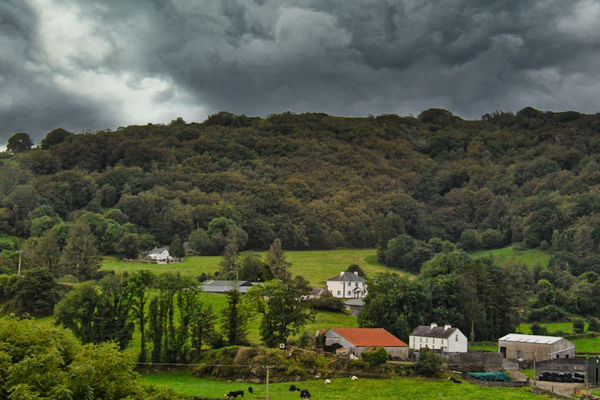
(Download)

(Download)
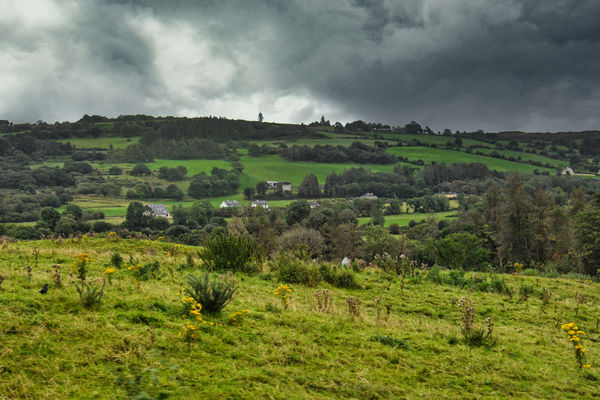
(Download)
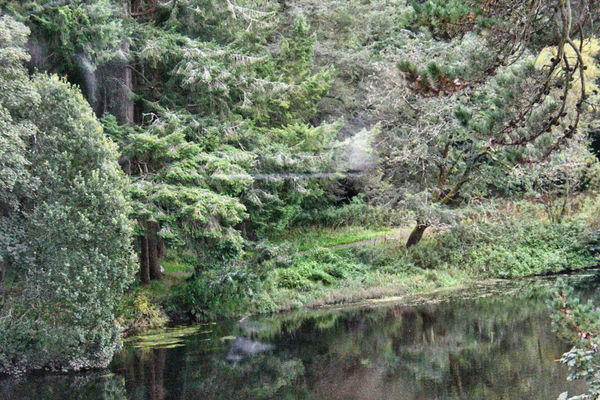
(Download)
Macroom Castle
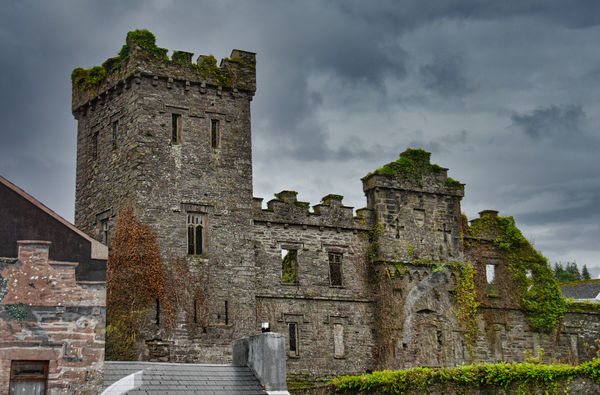
(Download)
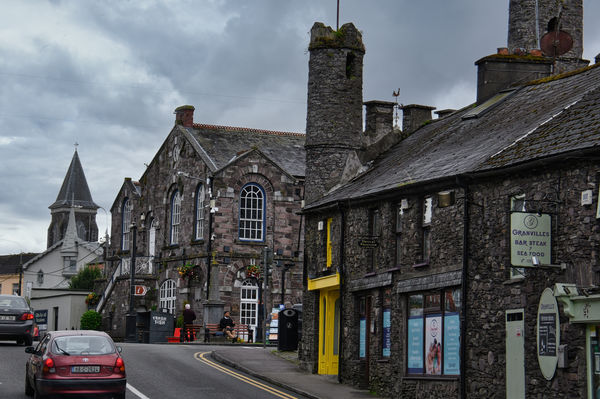
(Download)
Macroom Castle from the front
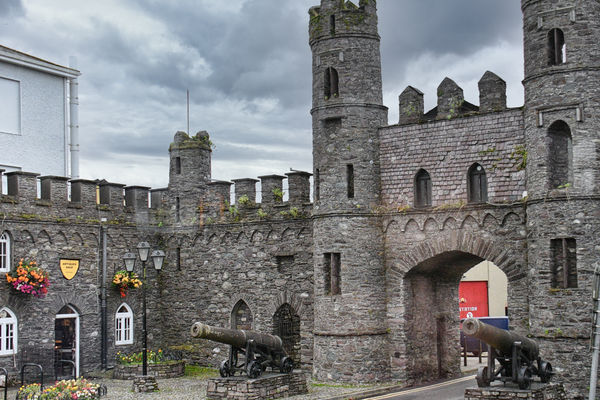
(Download)
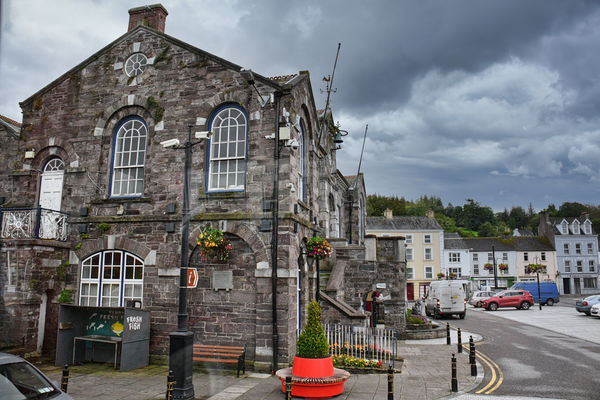
(Download)
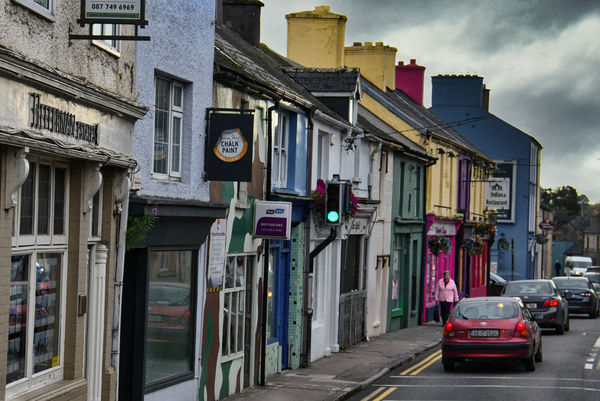
(Download)
Nov 30, 2020 14:42:30 #
Nov 30, 2020 14:47:59 #
Nov 30, 2020 14:49:36 #
Nov 30, 2020 14:54:04 #
Nov 30, 2020 15:02:44 #
Maybe it is the narrative or those great clouds, but this is one of your better legs of our journey, Mark!
Nov 30, 2020 15:07:04 #
srfmhg wrote:
County Cork (Irish: Contae Chorcaí) is a county in... (show quote)
Another excellent set Mark and a good demonstration of why it's so green there. I especially like numbers 2 and 3 and I think number 2 would be even better with about the bottom 25% croppped out of it (just above the red roof).
Nov 30, 2020 16:09:32 #
srfmhg wrote:
County Cork (Irish: Contae Chorcaí) is a county in... (show quote)
I like the country sides with moody skies.
Nov 30, 2020 17:46:41 #
Nice countryside and town shots, well taken in the rain - my favorite is #3. Joe
Nov 30, 2020 18:13:15 #
Nov 30, 2020 18:41:11 #
Nov 30, 2020 18:41:46 #
NMGal wrote:
Interesting commentary and beautiful photos.
Thanks very much Barbara.
Nov 30, 2020 18:42:56 #
EastWest wrote:
I just moved this up on my travel list!
I'm sure you will enjoy it. Thanks for commenting.
Nov 30, 2020 18:43:29 #
Nov 30, 2020 18:47:31 #
UTMike wrote:
Maybe it is the narrative or those great clouds, but this is one of your better legs of our journey, Mark!
Thanks Mike. This was a very scenic part of Ireland with a most interesting history. The clouds were spectacular but what they contained was not!
If you want to reply, then register here. Registration is free and your account is created instantly, so you can post right away.










